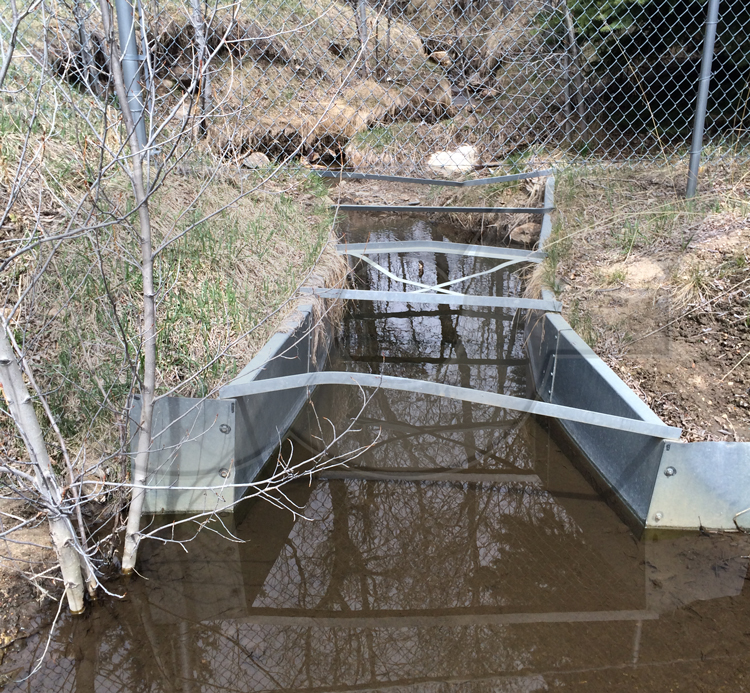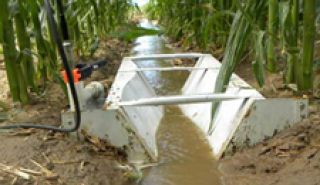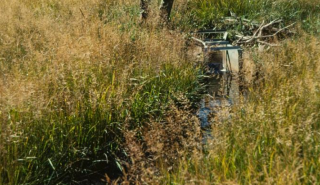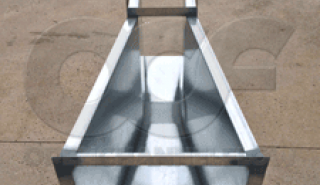We have worked with Water Rights Consultants, Ditch Riders, and Water Commissioners over the years and below are the most common problems that they encounter out in the field.
The examples below use Parshall and Cutthroat flumes, but these problems are common to all flume types used for water rights / irrigation flows.
Staff Gauge at Wrong Location
For a Parshall flume, the Ha (free-flow) point of measurement – and there is only one – is located back from the throat a distance of 2/3rds of the converging wall length.
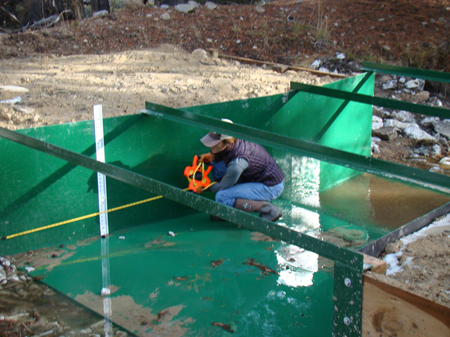
The point of measurement is not:
- In the throat
- At the entrance of the flume
- Upstream of the flume
Flume is Out of Level
After installation – particularly in earthen channels – it is not uncommon for a flume to settle. Skogerboe recommends that flumes be checked for level / settling six months after installation and then each year at the beginning of the irrigation season. Frost heave over the winter is a particular problem in earthen channel installations.
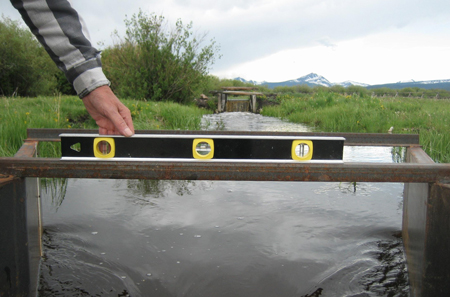
It is common to take the short cut of taking the level at the top of the flume on the stiffening angle. However, best practices suggest measuring the level on the floor of the flume – as this is where the level actually matters!
With no flow present it is each to check the level by noting how the water sits is the discharge of the flume!
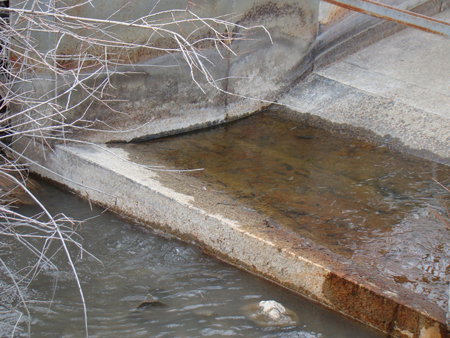
Flow is Bypassing the Flume
All of the flow must go through the flume.
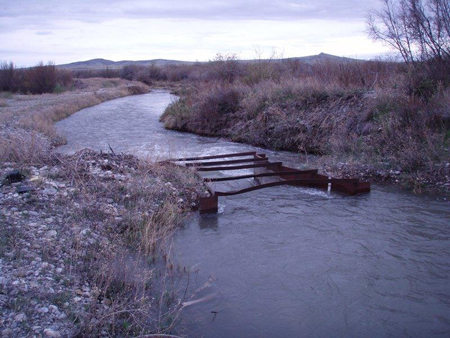
Overtime the channel walls / floor can erode, allowing flow to go under the flume or around it.
Flume Submerged
Improperly setting a flume or changes in the downstream flow conditions can result in a flume becoming submerged – where downstream conditions restrict the flow of water out of the flume.
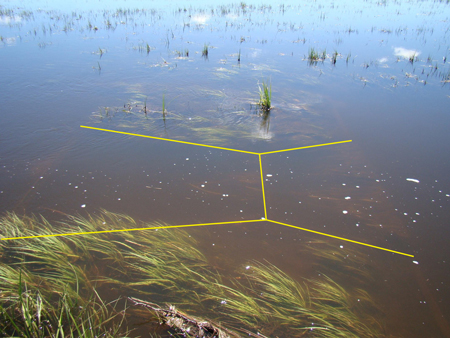
When submergence occurs either the flume must be raised in the channel (assuming the upstream channel banks will allow it) or the downstream channel must be renovated so that it does not restrict flow out of the.
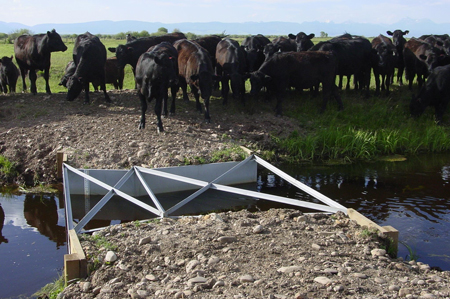
Renovation typically requires that vegetation / trash / debris be cleared out of the downstream channel. This may become a regular maintenance issue depending upon the location.
Poor Approaching Flow
A flume must be centered in the flow stream and the flow stream must be traveling along the centerline of the flume. Bends, dips, elbows, gates, and turnouts must be sufficiently far enough upstream so as to allow the flow to spread across the channel and have a normal velocity profile.
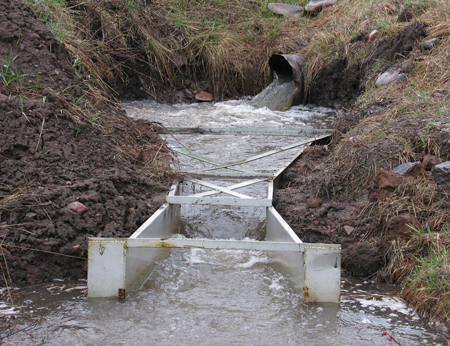
When a flume cannot be sited away from such upstream conditions, flow straighteners will be necessary to properly condition the flow before it enters the flume.
Poorly Maintained Upstream Channel
A poorly maintained upstream channel will affect the velocity profile entering the flume. In addition, seepage losses mean that the flow rate measured in the flume under-represents the amount of water actually diverted.
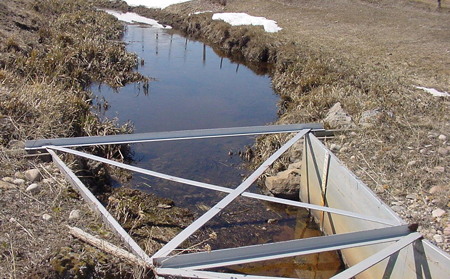
Algal Growth
Algal growth in a flume acts to restrict the flow through the flume. To keep algal growth down, there are several low cost approaches that have worked in the field.
Algal growth is particularly prevalant in Spring and Summer - when irrigation flows matter most.
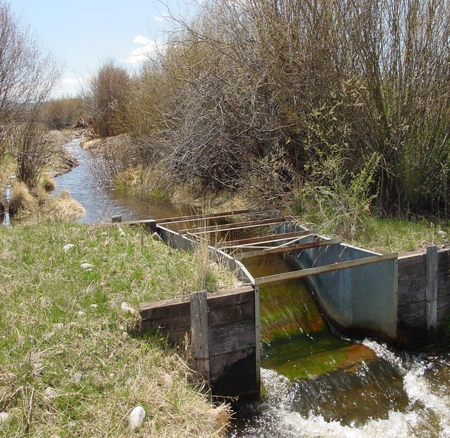
Distorted Dimensions
Light weigh flumes are particularly susceptible to distortion during and after installation. During installation it is particularly important that the flume be properly cribbed (braced) so that the sidewalls / floor do not distort. After installation, frost heave and other environmental factors can bow the sidewalls and floor of a flume - again, another reason not to just check the level of the top of the flume!
